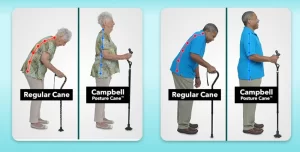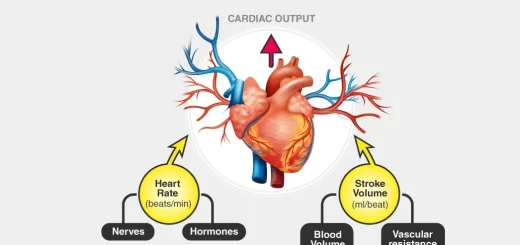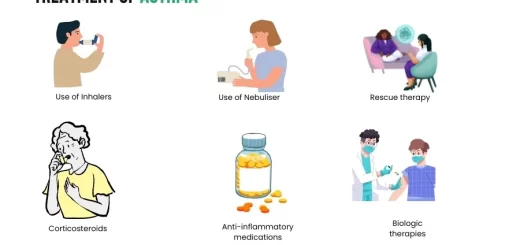Causes of recurrent falls in elderly, How to use walking canes correctly and How to treat falls?
Falls are a significant concern, especially in older adults, as they can lead to injuries, reduced mobility, and a decline in overall health. A clinical approach to falls involves a structured assessment, prevention strategies, and management.
Falls clinical approach
A fall is an unexpected event in which the participant comes to rest on the ground, floor or lower level.
1. Assessment
Patient History
- Fall history: Frequency, circumstances (e.g., activity, location, time of day), and injuries.
- Medical history: Focus on conditions that increase fall risk such as arthritis, diabetes, cardiovascular disease, Parkinson’s disease, or stroke.
- Medication review: Medications (especially sedatives, antihypertensives, anticholinergics, and psychotropics) that may affect balance, cognition, or blood pressure.
- Vision and hearing: Any impairments contributing to falls.
- Psychological status: Depression, anxiety, or fear of falling can increase fall risk.
Physical Examination
- Look for cognitive impairments, sensory loss, or motor deficits.
- Gait and balance assessment: Use standard tests like the Timed Up and Go (TUG) test, Berg Balance Scale, or the 4-Stage Balance Test.
- Musculoskeletal examination: Assess strength, joint mobility, and posture.
- Cardiovascular examination: Check for orthostatic hypotension, arrhythmias, or other conditions that might lead to syncope or dizziness.
- Vision check: Look for cataracts, macular degeneration, or other visual impairments.
Environmental Risk Factors
There are many Home hazards such as Poor lighting, clutter, loose rugs, lack of grab bars, or stairs without handrails.
2. Risk Stratification
- Low-risk patients: May have occasional falls with no injury or low-risk factors. Provide education and minimal interventions.
- Moderate to high-risk patients: Frequent fallers, those with multiple risk factors, or patients who have already suffered fall-related injuries. These patients require a multidisciplinary approach.
3. Prevention and Management
Non-pharmacological interventions
- Exercise programs: Focus on strength, balance, flexibility, and endurance. Tai Chi and balance retraining programs have shown effectiveness.
- Physical therapy: For gait and balance improvement.
- Occupational therapy: Home safety evaluation and modification (e.g., removing trip hazards, adding grab bars or non-slip mats).
- Footwear: Proper footwear with a good grip is essential. Avoid ill-fitting shoes or slippers.
- Vision correction: Ensure up-to-date glasses or treatments for conditions like cataracts.
Medication adjustment
- You have to review and adjust medications that may contribute to falls. Reduce polypharmacy if possible.
- Monitor the patient’s response to antihypertensive therapy, especially in older adults who may have orthostatic hypotension.
Addressing underlying health conditions
- Treat conditions like anemia, dehydration, or infections that might contribute to weakness or confusion.
- Manage chronic conditions, such as diabetes or Parkinson’s, to reduce associated fall risks.
Assistive devices
- Provide mobility aids, such as canes or walkers, to enhance stability.
- Train the patient on the proper use of assistive devices.
Education and counseling
- Teach patients and caregivers about fall risks and prevention strategies.
- Offer psychological support to reduce fear of falling, which can sometimes exacerbate fall risk due to inactivity.
4. Post-Fall Evaluation and Management
- Assess injuries: Head injuries, fractures (especially hip), or other trauma.
- Reassess fall risk: Update the patient’s fall risk profile and adapt interventions accordingly.
- Psychological support: Address any anxiety or depression following the fall.
- Rehabilitation: In cases of injury, coordinate rehabilitation services to restore function and prevent future falls.
Consequences (complications) of Falling
- Fall injuries.
- Loss of independence.
- Quality of life because of fear of falling again. (Fof).
- Long lies with the risk of pneumonia, dehydration, and rhabdomyolysis.
- Falls and fall injuries are costly and a major determinant of nursing home placement.
Risk factors
- Age greater than 80 years
- Need for assistance with activities of daily living,
- previous falls, circumstances, and witnesses.
- Vision (Multifocal lenses).
- Hearing.
- Acute illness.
- Hospital discharge.
- Drugs (4 or more).
- System review
- Commonly Multifactorial in the elderly.
Physical examination
- Arrhythmia.
- Orthostatic hypotension.
- Does he wear glasses?
- Hearing aid?
- Joints & muscles (ask him to stand and walk but be available to protect against falling.
- Feet: bunions, calluses, long nails, ill-fitting shoes.
- Review other systems (CVS, Chest, Abd., CNS esp tremors and peripheral neurop.)
LAB.
- No specific tests
- Choice of investigations according to physical findings E.g. CBC, FBS, Electrolytes etc.
- May need to test for the blood level of a drug e.g digoxin or anticonvulsant blood level.
Physical performance testing
- Timed Up and Go Test.
- Standing & sitting balance (Static and dynamic).
- Nudge on the sternum.
- One leg balance.
Timed Up and Go Test
- The patient is seated on a hard sturdy chair.
- Stands up.
- Walks 3 meters at his usual walking pace.
- Turns 180 degrees.
- Walks back to the chair.
- Sits down.
- More than or equal to 14 seconds increased risk.
Interventions to Reduce Falls
- Effective exercises: minimum 10 weeks effective even in very old individuals. individualized to be effective in fall prevention, Group exercises include Tai Chi exercises and others. It is recommended that older adults get at least Moderate-intensity 30 min. 5 times a week, Nice Guidelines it is recommended Against brisk walking as it increases fall risk in the elderly.
- Older persons can also be taught how to get up from the floor to prevent a long lie as a result of a fall.
- De-prescribing strategy: Gradual withdrawal and modification of drug prescription.
- Safety modifications in the home.
- Diminish the impact of the fall. Parkinsonian: Retropulsion… squatting, Walking cane: external rotation.
- Medical alert system. Wear a pendant alert device with a help button built-in to it. If an emergency, simply press the help button and the emergency monitoring center will pick up the signal. The emergency personnel can speak with the elderly through the microphone on the base station. They will assess the situation and dispatch the appropriate responders. The mobile system also offers GPS tracking technology so that responders can find the elderly no matter where he is.
- Home environment: floors, lighting, stairways, bathroom and kitchen.
How to use walking canes correctly
- proper height: handle of the cane at the level of the greater trochanter.
- during walking: the cane should be held in the hand opposite to the side of the diseased leg.
- climbing upstairs: Both hands must be supported patient goes up with the Good leg first.
- going downstairs: Both hands must be supported patient goes down with the diseased leg first.
You can follow science online on YouTube from this link: Science online
You can download Science Online application on Google Play from this link: Science online Apps on Google Play
Aging and cognition, Dementia symptoms, types, What comes first, dementia or Alzheimer’s?
Causes of Falls in the elderly, How to prevent falls and Why the Elderly die after a fall
Urinary incontinence in elderly causes and treatment, How to correct urinary incontinence?
Properties of cardiac muscles, Cardiac automaticity, and Conduction of electrical impulses
Delirium causes, types, diagnosis, treatment, Why do people get delirium and can delirium be cured?




